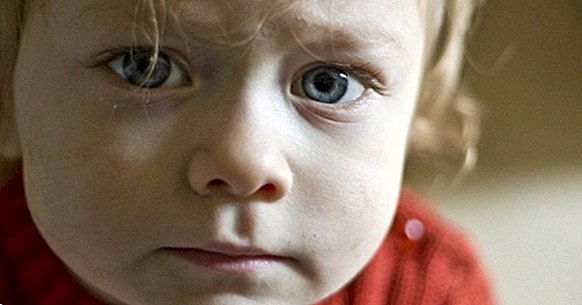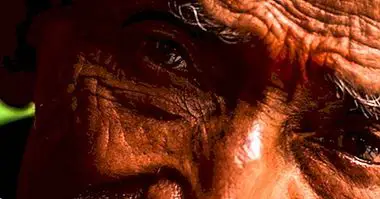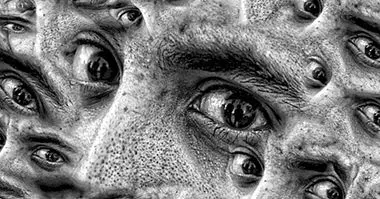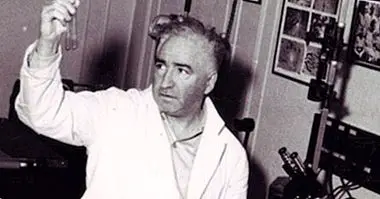Reactive attachment disorder: symptoms, causes and treatment
A kiss, a hug, a caress ... All this has something in common: in most cases they are carried out with affection , and most of us are awaken feelings of warmth and affection. Imagine for a moment that we have never received any in childhood. Or that we have done it, but without showing any affection or emotion in it. Imagine also that we have always felt secondary, unimportant for our near beings. How would we feel? How would we relate to others?
It would not be strange that this would cause us severe limitations, which would mark and hinder our development as people and our social relationships. This is what happens to those with reactive attachment disorder . Let's see what it consists of.
- Related article: "The 16 most common mental disorders"
Reactive attachment disorder: main symptoms
Reactive attachment disorder is one of the disorders related to traumas and stress factors . It is also a new disorder included in the latest version of the reference manual of clinical psychology and psychiatry, the DSM 5.
Reactive attachment disorder is characterized by the presence in children over nine months of age of a pattern of behavior in which there is a high emotional and affective inhibition towards their caregivers , not seeking and even avoiding contact and comfort in them even when there is some stimulus or situation that scares them or causes them pain or restlessness. In general, the subject feels unimportant and valued, and does not have a strong emotional bond with them.
This pattern of inhibition is maintained not only with their caregivers but also at the social level, expressing difficulties to react emotionally to the social environment and manifesting with certain frequency irritability, sadness or fear of the caregivers even in situations that do not pose a threat. They often express few positive feelings or emotions in social interaction .
The symptoms described above can be observed before the age of five, and it is important to bear in mind that it can only be diagnosed if the diagnostic criteria for autism are not met. In this sense, it is easy observe a certain similarity between some aspects of the symptomatology of both disorders , but there are big differences. One of them is its cause, which in the case of reactive attachment disorder has been identified and in fact forms part of its diagnostic criteria.
- Related article: "The Theory of Attachment and the bond between parents and children"
Causes
The causes of reactive attachment disorder, a fact requirement for it to be diagnosed, are mainly found in insufficient care during the first years of life. The subject has not received enough affection or supplied his emotional needs and care, love and protection and / or basic physiological.
It is more common in families where parents have poor parental skills, or where they tend not to express feelings. It is common to be in broken families, which do not offer or supplement the basic needs of the child.
It is also possible that there has been intrafamily violence, whether physical or not or whether the child in question is addressed or not, or sexual abuse. However, this does not mean that it can not occur in families without great difficulties at a socioeconomic level, the defining being the fact that they have not met or have not sufficiently met the needs of affection, or have resulted overly ambivalent in the expression of affectivity towards the subject in question.
They may also have this minor disorder that has gone through various changes of primary caregivers (for custody issues), or those who have been educated in institutions and contexts such as orphanages or auspices in which they have not been given enough time or enough attention to your affective needs. You have to bear in mind that the experience of these circumstances does not have to cause a disorder .
- Related article: "6 keys to overcome a difficult childhood"
Treatments
The treatment of reactive attachment disorder is complex and requires a multidisciplinary approach in which professionals from psychology, medicine, social assistance, education and the field can converge.
It is necessary that the subject can establish a solid link with a referral caregiver who provides emotional support . For this reason, the subjects with this type of disorder will often benefit from the use of family therapy, not only to treat the subject but also to establish appropriate educational guidelines in cases where there is a deficit of parental abilities.
It is essential to work the affective component with the child.In this sense, it will be very useful the use of therapies dedicated to strengthening the self-esteem of the subject , as well as training in social skills. The cognitive restructuring will allow to change the dysfunctional cognitions that the subject may have regarding social bonding.
We must also bear in mind that some cases occur in a context of severe neglect of the needs of the child, with circumstances that even entail a danger to the life of the subject. as the existence of dependence on drugs by parents. In this aspect the removal of guardianship or custody by a judge may be necessary either temporarily or permanently.
Bibliographic references:
- American Psychiatric Association. (2013). Diagnostic and Statistical Manual of Mental Disorders. Fifth edition. DSM-V. Masson, Barcelona.



















